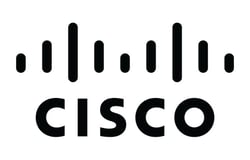/can%20technology%20drive%20the%20circular%20economy.jpg)
Can technology drive the circular economy?

Kani Talabani
Can technology drive the circular economy?
“The concept of a circular economy sounds very simple. And I think we all intuitively think that it is the right thing to do.” Learn about the challenges, strategies, and the undeniable role of technology in driving sustainable growth and circularity in business.
An overview: The circular economy
Why does a circular economy matter? As a society, we are using more natural resources than our planet can regenerate. We can't keep taking without giving.
A circular economy looks beyond the current take-make-waste model and aims to redefine growth by focusing on positive society-wide benefits. But how viable is the model, seen by some as little more than a utopian concept, across industries, organisations and their extensive supply chains? And what does it mean for IT leaders and their teams now at the forefront of the sustainability and ESG agenda?
Throughout the roundtable debate, these senior technology leaders discussed the perceptions and realities of the circular economy, shared their approaches and priorities of sustainability for operations and supply chains and underlined the economic benefits of a circular economy. Read on to reveal the impact this has had on IT leaders and teams across people, process and technology.
Technology and the circular economy: Meet the panellists
With Sasha Qadri moderating this roundtable debate, the speakers included:
- Joanna Pamphilis, CDIO, UniCredit
- James Maunder, former CIO, The London Clinic
- Colin Seward, Chief Sustainability Office Technology & Data Lead, Cisco
Watch the roundtable highlights for Can technology drive the circular economy?
The circular economy: Key takeaways
E-waste and the circular economy
Commencing the roundtable debate, moderator Sasha Qadri commented: “We produce around 50 million tonnes of e-waste every year.”
The appeal of moving towards a circular economy and eliminating that waste is present. On the other hand, she argued that “we’re not really there yet.” Sasha asked the panellists how the circular economy relates to technology, probing for a myriad of different perspectives on the matter.
“The concept of a circular economy sounds very simple. And I think we all intuitively think that it is the right thing to do.” Cisco’s IT Director Colin Seward stated that, in reality, the world economy is still in a linear state. To achieve the vision of a circular economy, Colin argued it would take a series of system and culture challenges.
Looking at the situation from a global perspective, Colin informed the panellists that a couple of years ago the world was nine percent ‘circular’. Now, that figure has gone down.
Technology is faring better than the rest of the globe, explaining that “the latest e-waste report shows that it’s around about 17 percent,” compared to the current global average of 7.2 percent.
Also addressing the growing challenge of transitioning from a linear to a circular economy, Joanna Pamphilis, added that technology and digital have the potential to “unlock this topic of technology driving the circular economy.”
Highlighting the instrumental role of technology and, more specifically, digital tools in propelling the transformative shift towards the circular economy, Joanna gave the example of moving professional conferences online, leading to improved carbon emissions. Not only this, but technology also gives the consumer “visibility into the product.”
Discussing his role as CIO at The London Clinic, James Maunder said: “Circularity requires the elimination of as much waste as possible.” With healthcare being a carbon-intensive industry, James explained that the machines they used were “electricity-hungry”, prompting leaders to rethink where they source their electricity from.
“Do you choose to source it from a circular, regenerative form of electricity?”
To top this all off, “we have a huge plastic waste problem, and that’s really difficult to solve.” James went in-depth on the wider discussion about the types of materials society is comfortable with using, in comparison to those they will not consider.
While aluminium cans are “brilliant” and infinitely reusable, he commented “a lot of plastic bottles are a disaster unless they’re specific types of plastic so we have to be incredibly mindful about the materials we use.”
Technology enabling circularity
Further on in the debate, Sasha asked the panellists in their view how they think technology is enabling circularity.
“As part of our digital transformation we have a very strong ambition in this next chapter of our journey towards [the] cloud.” While not able to share any examples specific to the circular economy, Joanna shared that in their move to the cloud, UniCredit will improve their consumption compared to an on-premise data centre.
During his time at Cisco in the IT domain, Colin's final role as the CIO for Europe involved examining the company’s data and technology. “We had a lot of questions from customers around what is Cisco doing inside the organisation to be more sustainable? That’s when I started producing a framework for sustainability at Cisco IT.”
Focusing on the circular economy aspect of his role, Colin argued that circularity is not just about recycling any old material, it is about refurbishing, remanufacturing and repairing products that can be reused. “We have a goal that by 2025, 100 percent [of the] new products that we ship will be built using circular design principles.”
Colin acknowledged the importance of these circularity principles within Cisco. He also noted that this would not work without one vital aspect. He discussed the organisation’s program Cisco Refresh, where equipment is remanufactured: “This is all great but it does depend on the demand… the more demand there is, the more we can produce.” It all boils down to the question of how companies can incentivise customers to return the product.
This roundtable was created in partnership with Cisco.
SUBMIT A COMMENT
RELATED ARTICLES
Join the community
To join the HotTopics Community and gain access to our exclusive content, events and networking opportunities simply fill in the form below.
